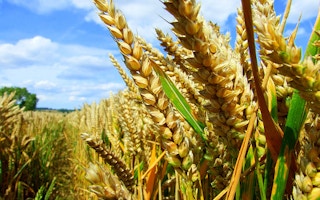The United States remained the primary backer of biotech crop technology in 2011, but adoption spread internationally as the total global planted area of genetically modified seeds grew 8 per cent from a year ago, according to a report issued Tuesday.
Roughly 160 million hectares, or 395.2 million acres, were planted with biotech crops in 2011, up 8 percent from 2010, said the International Service for the Acquisition of Agri-Biotech Applications (ISAAA) in its annual report on biotech seed use.
The biotech crops were planted by 16.7 million farmers in 29 countries, up from 15.4 million farmers in the same number of countries in 2010. (A full copy of the report can be found here: www.isaaa.org.)
“I was a little surprised that the growth was as strong as it is,” said Clive James, chairman of the ISAAA board of directors. “Millions of farmers around the world in both industrial and developing countries are adopting the technology.”
ISAAA is a not-for-profit organization aimed at promoting crop biotechnology applications, which are the subject of controversy, particularly in Europe, where they are largely banned. Critics say there is evidence of human health dangers and environmental problems connected to genetically modified crops, though the technology companies who develop them and supporters say they are proven safe.
US farmers have embraced the technology, and most of the US corn and soybeans are genetically altered. Corporate biotech leaders, like Monsanto, have crafted crops that tolerate dousings of herbicides, and crops that are designed to resist pests, effectively creating their own insecticide.
The technology is becoming increasingly popular in Brazil and Argentina, China, India and South Africa, said James.
But the United States has by far the largest area of planted genetically altered crops. According to the ISAAA, US farmers planted 69 million hectares, or 170.43 million acres, with biotech crops in 2011; followed by Brazil with 30.3 million hectares, (75 million acres) and Argentina with 23.7 million hectares (59 million acres).
US plantings were up 3 per cent from 2010.
While the United States boasts biotech corn, soybeans, cotton, canola, sugarbeet, alfalfa, papaya and squash, in Latin America biotech crops are so far limited to soybeans, corn and cotton.
India had 10.6 million hectares (26.2 million acres) planted to cotton in 2011 and Canada had 10.4 million hectares (25.7 million acres) planted to canola, corn, soybeans and sugarbeet.
All other countries had less than half that amount, with China having the next largest planting area for biotech crops with 3.9 million hectares (9.6 million acres) planted in 2011.
While biotech crops remain highly controversial in Europe, six European Union countries — Spain, Portugal, the Czech Republic, Poland, Slovakia and Romania — planted 114,490 hectares of biotech corn in 2011, up from 23,297 hectares in 2010.
Biotech crops are accepted for import for food and feed use and for release into the environment in 60 countries, including major food importing countries like Japan, which do not plant biotech crops, the ISAAA said.
The global value of biotech seed alone was $13.2 billion in 2011, with the end product of commercial grain from biotech maize, soybean grain and cotton valued at $160 billion or more per year, according to the ISAAA.










